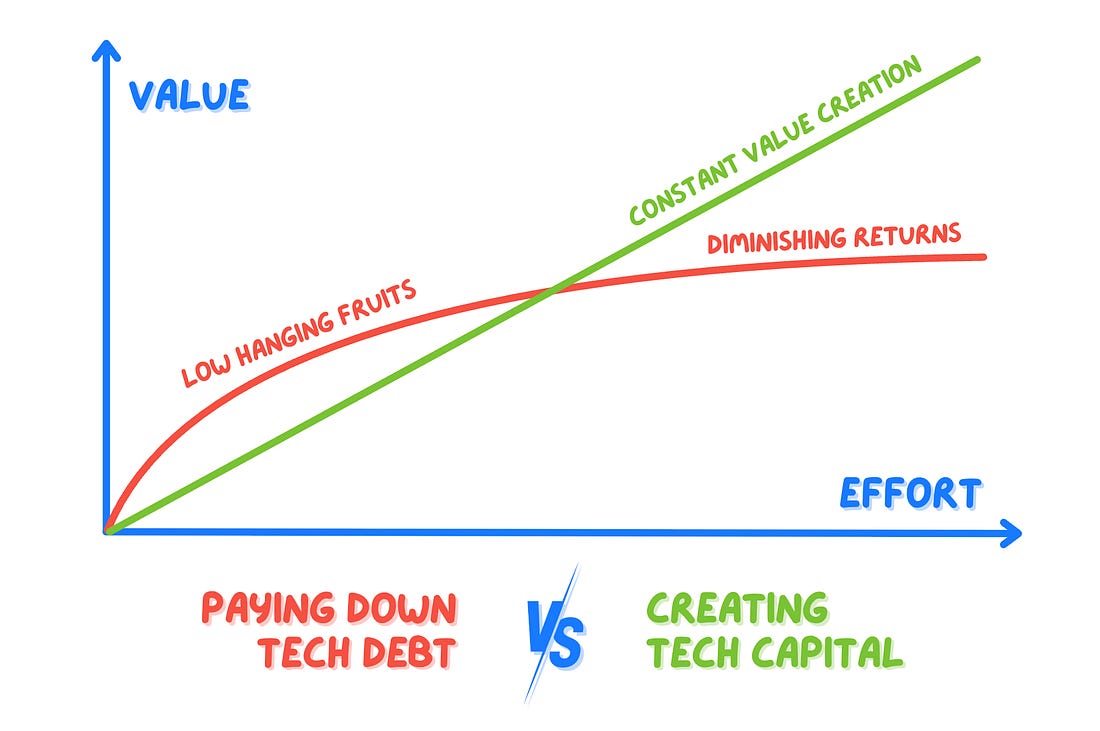Shifting From Tech Debt To Tech Capital
Hey, Luca here, welcome to a new edition of Refactoring! Every week you receive these from me:
Here are the latest editions you may have missed: To read all the editions and join the private community, subscribe to the paid version: Shifting from Tech Debt to Tech Capital 🏦How to move engineering teams from a mindset of scarcity to one of abundanceA few months ago I sat down for a coffee in Rome with my friend Aviv, who is an executive coach and consultant, and was in town for a couple of days. Since we are both There’s always some legacy code that needs refactoring, a messy architecture that slows things down, or a new way of doing things beckoning us. It’s an easy problem to rally people around—who doesn’t want to clean up the mess? But, as Aviv noted, here’s the catch: tech debt is a capped problem. Fixing it might make you feel better, but it won’t make your company win. Because you can only improve so much by reducing friction. What actually moves the needle isn’t removing liabilities—it’s building assets. Enter tech capital: the engineering investments that compound over time and make a company stronger, faster, and more valuable. Unlike tech debt, tech capital isn’t just about fixing the past—it’s about creating leverage for the future. I love this concept and today I brought in Aviv to discuss it more, and explore how to make teams shift from a mindset of scarcity (debt) to one of abundance (capital). So here is the agenda:
Let’s dive in! p.s. Aviv works with a lot of tech leaders and recently wrote a great book on creating successful R&D organizations. You may want to check it out! (no affiliation) 💸 Tech debt is cappedBefore going any deeper, let’s start with a disclaimer. The quality of your code base matters — without a doubt. Don’t allow your CEO to send this article over Slack and say, “See?? Aviv said we don’t need to fix our debt.” Our focus here is on maximizing return-on-investment. Tech debt discussions often focus on reducing pain, but there’s only so much upside to fixing old problems. Let’s break down why:
So, instead of obsessing over what holds us back, let’s focus on what can propel us forward 👇 🏦 What is Tech Capital?If tech debt is a liability, then tech capital is an asset—it’s what makes an engineering org more valuable over time.
In my experience, the three most common ways companies create tech capital are:
The key question is: “Will this investment make us faster, more powerful, or smarter six months from now?” 🔬 Real-World ExamplesSo here are some real examples of the above:... Subscribe to Refactoring to unlock the rest.Become a paying subscriber of Refactoring to get access to this post and other subscriber-only content. A subscription gets you:
|





